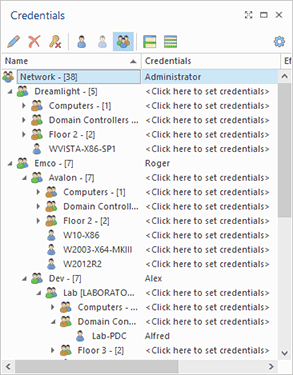Configuring the Program and Network Environment
To manage computers remotely, you need to have Windows administrative permissions on those PCs. The program automatically installs an agent on the managed PCs through the network, so you need to have administrative permissions to be able to install and uninstall the agent remotely, to interact with the agent and to get required information from remote PCs. When you start the program for the first time, Initial Configuration Wizard is displayed asking you to specify the administrative credentials Pic 1. If you work in a domain, you should enter the domain administrator credentials there. If you work in a workgroup, you should enter the credentials of a user that has the administrative credentials on all computers in the workgroup.
The entered credentials are securely saved in the program and are used to access remote PCs. You can change the credentials in the Credentials view. For example, if you have multiple domains in your network, you can specify different administrative credentials to access different domains. You can also specify different credentials to access, for example, workgroup PCs if they use different administrative accounts Pic 2.
The program uses the standard Microsoft networking services to communicate with remote PCs. If you use the default Windows configuration, you do not need to apply any changes to your configuration. Make sure that your network is configured to satisfy the requirements. The required services must be started on the server and remote PCs, and the required ports must be opened. If you would like to install the program server and clients on different computers to connect remotely, make sure that the 48021 and 48022 ports are opened in the firewall on the computer where the server is installed.
If you plan to use the Wake-on-LAN operation, you need to make sure that Wake-on-LAN is enabled in the BIOS, and the network card settings on the remote PCs and, depending on your network structure, your routers are properly configured to transmit WOL packets. You can learn more on this topic in the Using Wake-on-LAN to Wake Up Computers chapter.

